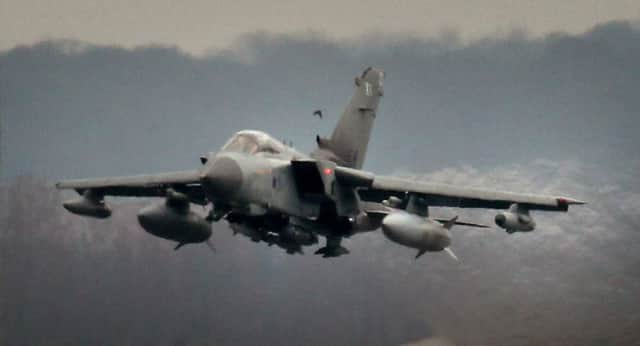‘Drastic action’ avoids Lossiemouth jet collision


A report by the UK Airprox Board – which investigates such incidents – has rated the incident over Moray as a category B, the second highest level in which it is judged that safety is “not assured”.
Investigators also concluded that only “drastic action” avoided a collision at RAF Lossiemouth on 26 November.
Advertisement
Hide AdAdvertisement
Hide AdIn the report, one of the pilots describes the risk of a collision as “high”.
The report, on his evidence, noted: “Another Tornado was seen to commence a visual finals turn; after approximately 90° of turn, the Tornado on finals was seen to roll out and bunt [loop] beneath him; simultaneously he pulled up to increase the separation and broke off the approach.”
The other pilot and personnel at the base judged the risk to be “medium”.
However, the report concluded that there had been a “misjudgment” by the ground controller and as a result procedures have been changed.
The report comes amid continuing concerns over the safety of the RAF’s fighter jets and demands that a collision warning system is installed on them to prevent future tragedies.
The incident in November follows the fatal collision between two RAF Tornado jets over the Moray Firth in July 2012 which led to the loss of three airmen.
A Military Aviation Authority (MAA) report concluded that this accident could have been avoided by the installation of a collision warning system.
The annual air safety report has also highlighted potential collisions with commercial passenger jets unless a system is installed.
Advertisement
Hide AdAdvertisement
Hide AdThe vital piece of safety equipment has been tested and recommended for the Tornado for over 20 years but installation of a system was delayed until 2013.
There was a further delay in 2012 when the then Tory defence secretary Liam Fox scrapped the project only to perform a U-turn six months later.
The MAA report catalogued unacceptable delays, and poor decision making and communication at the MoD on the installation of warning systems.
So far only eight Tornados have the system while there are no plans for them to be installed on newer Typhoon fast jets.
Commenting on the report into the latest incident, Angus Robertson, SNP Westminster leader and MP for Moray which includes RAF Lossiemouth, said: “This is particularly worrying as once again safety for Tornado jets operating out of RAF Lossiemouth is thrown under the spotlight and it is very likely this incident would have been avoided if these aircraft had been fitted with the collision warning systems that the SNP have been demanding for many years.
“To be rated as a category B incident means it rates as the second highest possible danger, in which only drastic action avoided a collision between two RAF jets, and can only lead to the fear that another deadly collision, as happened in 2012, could occur again.
“It is a complete disgrace that 16 years after such a system was promised, it has still not been installed.”
An RAF spokesperson said: “The RAF takes all reported Airprox incidents very seriously. Air safety considerations are at the core of all our aviation activity, but no flying is without risk.
“As the report says, local air traffic training and procedures have been amended following a thorough investigation into this incident.”